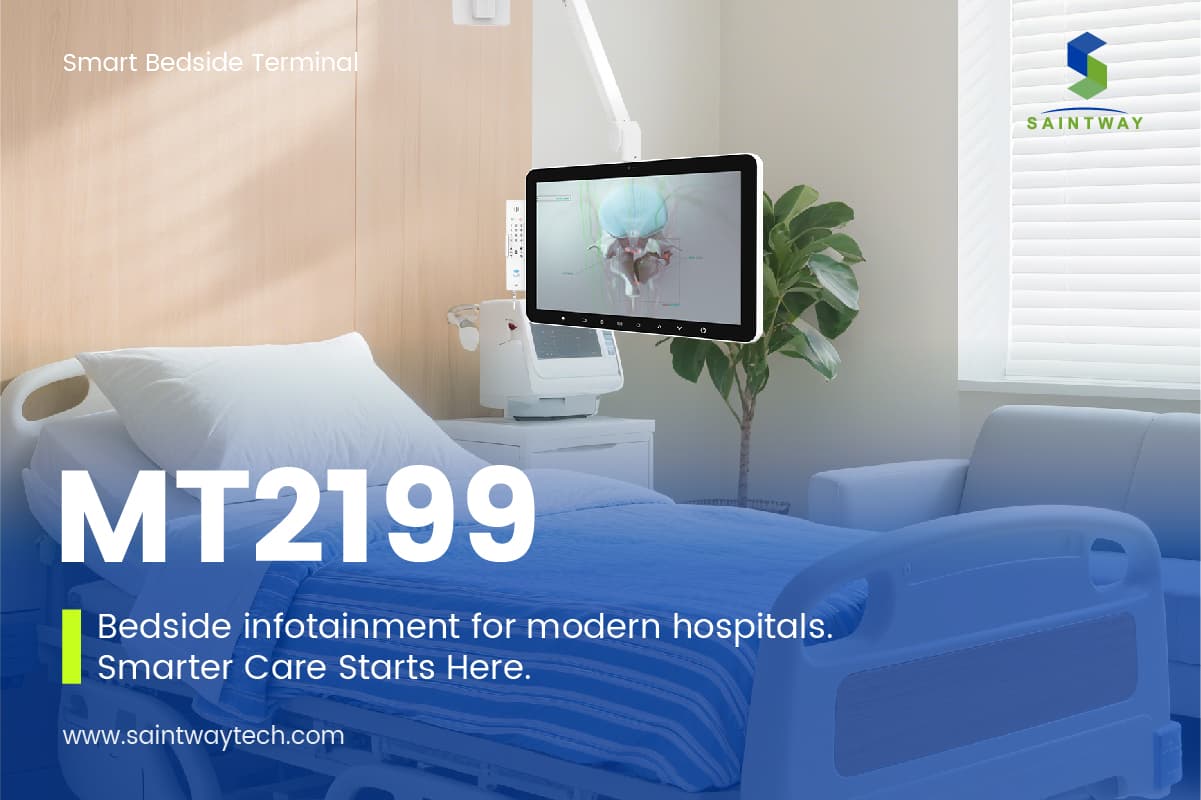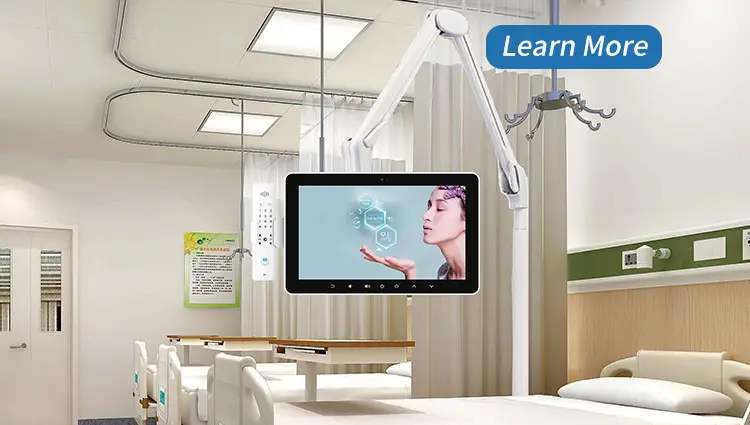In the ever-evolving landscape of healthcare, patient experience has become a paramount concern. Beyond providing medical treatment, healthcare facilities strive to create an environment that fosters comfort, convenience, and overall well-being for their patients. One innovative solution that has gained significant traction in recent years is the implementation of bedside infotainment systems. These cutting-edge technologies not only entertain patients but also empower them with access to valuable information and resources, ultimately improving their overall experience during their hospital stay.

The Multifaceted Benefits of Bedside Infotainment
Bedside infotainment systems are comprehensive multimedia platforms that integrate various features, including television, internet access, educational content, and communication tools. By offering a wide range of services at the patient’s fingertips, these systems cater to their diverse needs, ensuring a more comfortable and engaging hospital experience.
- Entertainment and Distraction
One of the primary benefits of bedside infotainment systems is the provision of entertainment options. Patients can access a vast array of television channels, movies, music, and games, providing a much-needed distraction from the stress and discomfort associated with their medical condition. This entertainment factor not only helps alleviate boredom but also serves as a therapeutic outlet, promoting relaxation and improving overall mental well-being. - Educational Resources
Beyond entertainment, bedside infotainment systems offer a wealth of educational resources tailored to patients’ specific needs. Patients can access informative videos, interactive tutorials, and digital libraries covering various medical conditions, treatments, and preventive measures. This empowers patients with knowledge, enabling them to make informed decisions about their healthcare and actively participate in their treatment plans. - Improved Communication and Connectivity
Effective communication is crucial in healthcare, and bedside infotainment systems facilitate seamless interactions between patients, healthcare providers, and loved ones. Patients can easily communicate with their care team, schedule appointments, request assistance, or even video conference with family members who may be unable to visit in person. This enhanced connectivity fosters a sense of support and reduces feelings of isolation, which can positively impact the patient’s overall emotional well-being. - Personalized Care and Accessibility
Bedside infotainment systems offer personalized experiences tailored to individual patient needs. Patients can customize their preferences, adjust language settings, and access assistive technologies, such as closed captioning or screen readers. This level of personalization ensures that patients feel respected and accommodated, regardless of their specific requirements or limitations.
The Importance of User-Friendly Design
While the features and functionalities of bedside infotainment systems are impressive, their true impact lies in their user-friendly design. Healthcare facilities must prioritize intuitive interfaces and easy-to-navigate menus to ensure seamless adoption and utilization by patients of all ages and technological proficiencies.
User experience (UX) experts play a crucial role in the development of these systems, conducting extensive research and usability testing to ensure that the interfaces are accessible, visually appealing, and tailored to the unique needs of patients in a healthcare setting. By incorporating principles of human-centered design, bedside infotainment systems can effectively bridge the gap between technology and patient comfort, ultimately enhancing the overall patient experience.
Integrating Bedside Infotainment into Patient-Centered Care
The implementation of bedside infotainment systems is not merely a technological endeavor but a holistic approach to patient-centered care. Healthcare facilities must adopt a comprehensive strategy that encompasses staff training, patient education, and ongoing support to ensure the successful integration of these systems.
Staff Training and Engagement
Healthcare professionals play a pivotal role in introducing and supporting the use of bedside infotainment systems. Comprehensive training programs should be implemented to ensure that staff members are well-versed in the features and functionalities of these systems, enabling them to provide guidance and assistance to patients effectively.
Patient Education and Awareness
Patients should be informed about the availability and benefits of bedside infotainment systems upon admission. Clear instructions and demonstrations can help alleviate any apprehensions or technological barriers, empowering patients to take full advantage of these resources during their hospital stay
Ongoing Support and Feedback
Continuous support and feedback mechanisms are essential to ensure the effective utilization and improvement of bedside infotainment systems. Healthcare facilities should establish dedicated support channels, such as helpdesks or on-site assistance, to address any issues or concerns patients may have. Additionally, gathering feedback from patients and healthcare professionals can provide valuable insights for refining and enhancing these systems to better meet evolving needs.
Addressing Privacy and Security Concerns
While bedside infotainment systems offer numerous benefits, it is crucial to address potential privacy and security concerns. Healthcare facilities must implement robust data protection measures to safeguard patient information and ensure compliance with relevant regulations, such as the Health Insurance Portability and Accountability Act (HIPAA) in the United States.
Encryption protocols, access controls, and regular security audits should be employed to mitigate the risk of data breaches or unauthorized access. Additionally, patients should be informed about the privacy measures in place and provided with clear guidelines on how to protect their personal information while using these systems.
The Future of Bedside Infotainment: Embracing Innovation
As technology continues to evolve, the potential of bedside infotainment systems will only expand. Healthcare facilities should remain open to embracing new innovations and integrating emerging technologies that can further enhance the patient experience.
Virtual reality (VR) and augmented reality (AR) applications, for instance, could revolutionize patient education and therapeutic interventions. Patients could immerse themselves in interactive simulations or visualizations, gaining a deeper understanding of their medical conditions or practicing relaxation techniques in virtual environments.
Moreover, the integration of artificial intelligence (AI) and machine learning could enable personalized content recommendations, tailored to individual patient preferences and needs, further enhancing the overall experience.
Conclusion
Bedside infotainment systems have emerged as a powerful tool in improving patient experience and fostering a more comfortable and engaging healthcare environment. By providing entertainment, educational resources, communication channels, and personalized accessibility, these systems cater to the diverse needs of patients, empowering them and promoting overall well-being.
As healthcare facilities continue to prioritize patient-centered care, the adoption of bedside infotainment systems will become increasingly prevalent. However, successful implementation requires a holistic approach that encompasses user-friendly design, staff training, patient education, and robust privacy and security measures.
By embracing innovation and staying attuned to emerging technologies, healthcare facilities can continuously enhance and refine these systems, ensuring that they remain at the forefront of delivering exceptional patient experiences.


